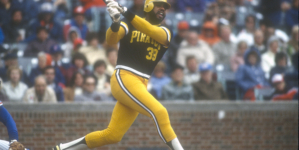-
Takeaways From a Times Investigation of the Pope’s Legacy on Sex Abuse - 8 mins ago
-
Class of 2025 Hall of Famer and Seven-Time All-Star Dave Parker Dies - 31 mins ago
-
Tim Walz Eulogizes Minnesota Rep. Melissa Hortman and Husband During Funeral - 52 mins ago
-
Two Key Red Sox Hitters Will Face Massive Pressure Upon Returning - about 1 hour ago
-
Baby tiger reported by California highway. What the CHP actually found - about 1 hour ago
-
Chief Justice Urges Political Leaders to Tone Down Rhetoric - 2 hours ago
-
Where to Watch Jake Paul Boxing Match on Saturday: Stream Fight vs Chavez Jr. - 2 hours ago
-
California Closes $12 Billion Budget Deficit With Hit to Migrants - 2 hours ago
-
Lalo Schifrin, 93, Dies; Composer of ‘Mission: Impossible’ and Much More - 2 hours ago
-
California woman dies after floundering off coast in Hawaii - 3 hours ago
Gen Zers Convinced They Can Predict a Recession—It’s Not Going Well
We have been long advised not to believe everything that we see online, but when creators start citing Gwyneth Paltrow’s carb cravings or the rise of Pilates chic as signs of a looming financial crash, the question becomes unavoidable: do any of these so-called “recession indicators” hold real validity?
Across TikTok, Instagram and YouTube, Gen Zers and younger millennials have been spotlighting the curious return of several late 2000s’ and early 2010s’ cultural motifs—some subtle, others screamingly obvious.
Platinum blonde hair with visible dark roots; the reemergence of “recession pop” music; the rising popularity of “skinny chic,” not long ago dubbed problematic: the list goes on, including, unmanicured nails, mustache-embossed crockery and even the rerelease of Coca-Cola’s “Share a Coke” campaign.
The implication? A return to recession-era culture suggests a return to recession itself.
Some of these social media-driven indicators are grounded in economic behaviors we have seen before—people cutting spending and dressing to appeal to those in positions of power. But others are, at best, psychological signposts and, at worst, internet inside-jokes.
“Pop culture ‘recession indicators’ are entertaining—but they are not economic science,” Louis Carter, founder and CEO of Best Practice Institute, told Newsweek. “These trends are reflections of mood, and lack of human logic—not causes of market movement.”
In conversations with Newsweek, content creators, analysts, and economists unpacked the cultural, financial, and political narratives behind several trending indicators—and whether anything can actually be predicted from them.
‘Recession Blonde’
Leah Holm, a marketing manager and influencer known as @ladyleahmarie, recently gained viral attention for her breakdown of “recession blonde”—a style featuring platinum blonde hair with grown-out roots, seen in the late 2000s and very early 2010s and making a comeback today.
“This trend was the direct result of the economical state of the world at the time,” Holm said in a TikTok video. “Prices went up, people had less money … The girls who would previously get their roots touched up every 4 to 6 weeks didn’t have money to do so, so they let them grow out, and this became a trend.”
Holm told Newsweek that fashion reflects cultural and economic conditions—and, right now, we are in what she calls a “recession-core” moment.
“Fashion has always mirrored the times we are living in—economically, politically, and emotionally,” Holm said. “We are seeing a shift toward timeless, minimalist styles in response to inflation, job insecurity, and global uncertainty.
“Think muted colors, clean silhouettes, and an emphasis on quality over quantity.”
Holm has spotted a marked rise in aesthetics labeled “old money” or “quiet luxury,” alongside emerging consumer trends such as “capsule wardrobes,” and creators engaging in “low-buy years” or “underconsumption”—all of which are geared toward people spending less.
‘Recession Pop’
For Texas-based content creator Xavier Wilson (@xavier.clb), 27, the rise of “recession” talk online is less about market indicators and more about cultural anxiety playing out on loop. His videos focus on class divides and the social-mobility traps that Gen Z face.
“I think the idea of a recession online has become an anxious long-running joke and trend,” Wilson told Newsweek. “TikTok rose to popularity during the pandemic, when recession fears were high and they never really went away.
“That created an ongoing wave of trends that anyone could participate in, everyone can relate to, and that sparks enough conversation to stay active in the algorithm.”
Wilson, who was featured in a Gen Z report presented at the 2023 World Economic Forum, said that, for younger generations, the recession is more cultural than fiscal. It is gamified, meme-ified and shared endlessly—but also rooted in real anxiety.
“While our parents have experienced recessions, it is not ‘real’ for Gen Z in the same way,” Wilson said. “It is a bit of a game—’Is this indicator a real one?’ Will this finally bring the recession we’ve been talking about for years?”
Online, “recession pop” has become a nostalgic shorthand for the glossy, synth-heavy hits of the late 2000s and early 2010s—think Kesha, early Katy Perry, and The Black Eyed Peas—resurfacing across playlists and TikTok montages.
The sound evokes a time when escapism ruled the charts, and its return feels eerily timely to some.
Ozempic, Pilates, and Conservative Lifestyles
On Instagram, MaryBeth Monaco-Vavrik (@mb.mv) ignited discussion with her viral video exploring the connections between fitness aesthetics, cultural shifts and what that can suggest about the economy.
“There is a strong pattern of fitness ideals shifting based on political and cultural values,” Monaco-Vavrik, a certified barre instructor based in Washington, D.C., told Newsweek. “Pilates aligns with the ‘clean girl’ aesthetic and broader conservative shift we are seeing.”

@ladyleahmarie / Getty Images
The Ozempic craze and resurgence of ultra-thinness are part of that same ideological fabric.
“The sanitized, exclusionary aesthetic of Pilates reflects certain values: control, conformity, proximity to whiteness and wealth,” the 24-year-old added.
The Hemline Index
Coca-Cola’s revival of its “Share a Coke” campaign and the popularity of late 2000s and early 2010s fashion staples—large handbags, indie sleaze styling, heels and peplum detailing—have all been flagged online as evidence of a looming economic downturn.
One creator, @style.analytics, shared in a TikTok video that they had used data to dissect which trends are actually indicative of a looming recession.
They concluded that mini skirts were the “most confident predictor of consumer confidence in the economy,” later elaborating that the garments becoming trendier suggests that consumer confidence in the economy has dropped.
The idea that skirt length can be representative of economic change is called the hemline index.
The creator added that indie sleaze styling, big bags, maxi skirts and blazers becoming trendier is also indicative of a looming recession, among other talked-about nods to the economy like lipstick theory.
@style.analytics These are just the recession indicators that I have been hearing about a lot — but please let me know if you have any other indicators that you would like to test. A bit more on the analysis: I didn’t want to just report on some growth metrics (I saw a financial advice account report that maxi skirts were trending in the google data this past month which means we are going into a recession. Like, it’s spring, so ofc they are?), or run a bunch of regressions between consumer confidence in the economy (CCI) and a single search term for each recession indicator. So! I used structural equation modelling, which allows me to combine multiple items and search terms into a single variable. For example, I have included the volume of people looking for hobo bags, oversized bags, tote bags, balenciaga city bags, louis vuitton neverful, etc., within my ‘big bag theory’ variable. And for indie sleaze, I have a bunch of trends associated with it within its latent variable, such as: cheetah, leopard, fur, skinny jeans, disco pants, etc. When you are building this model, you have to ensure that al of these variables are trending together and not just making a big mess. Here, you have to take time to evaluate the the model fit and factor loadings for each item before it could be included in the latent variable and therefore in the regression. Hope that makes sense! Might do a post or another video explaining all of this in-depth! Might include the R code if someone is interested… ? In the end, mini skirts and blazers had a strong negative relationship with CCI — suggesting that interest in these items can be signals that the economy is doing poorly. Big bags, lipstick, maxi skirts, and indie sleaze had a moderate negative relationship, and then peplums and high heels had no relationship. I know someone in the comments will say that my R2 values are way too low — and I totally thought the same thing. However, after looking at expected R2 values for cultural data and real world signals versus experimental data — these values are pretty good. (Feel free to argue with me tho, I’m not an expert.) (Oh and this is just US data btw.)
♬ original sound – Style Analytics
Destiny Chatman, a consumer expert at TopCashback.com, is not certain things are quite so simple.
“Things that were popular in the 2010s coming back in 2025 do signal that we are headed toward a recession because 2007 to 2009 was the last Great Recession in America,” she said. “However, everything old does become new again, and people should take these ‘recession indicators’ with a grain of salt.”
Kristen Smirnov, a professor at Whittier College, emphasized the cyclical nature of aesthetics.
“Pop culture and fashion trends are naturally cyclical,” Smirnov told Newsweek. “Part of how we signal social capital is by showing we are in tune with what is current, and ‘what is current’ often swings away from whatever came just before.”
Possibly the most-mocked “indicator” of all has been actress and wellness mogul Gwyneth Paltrow announcing she will start eating carbs again—an abrupt dietary change for someone long associated with extreme wellness trends.
Online, it was quickly labeled a “recession-coded” move, but Hila Harary, a trend forecaster at Tectonic Shift, sees it differently.
“Gwyneth Paltrow’s diet is not being revived—it is being rejected,” Harary told Newsweek. “People are choosing joy over control … To enjoy the pasta, not obsess over celery juice.”
Harary noted that this cultural nostalgia for a rose-tinted past is often mistaken for economic nostalgia.
“Nostalgia shows up elsewhere—in the resurgence of the early 2010s trends, for example,” she added. “But that is about emotional security.
“When the present feels unstable, people gravitate toward eras that felt simpler, it is comfort, not forecasting.”
Harary pointed to broader movements such as “Back to the Roots,” encompassing gardening, sustainability, and natural beauty.
“Yes, economic pressure can amplify these shifts, but the root cause is values, not just cost,” she said. “The ‘trad wife’ trend fits here, too—a return to traditional, more conservative ways of living.
“It is not caused by a recession, but it can have recession-like effects on household economics.”
Financial experts agreed that the meme economy and actual economy have little overlap.
“Cultural clues are fun to watch, but real financial strategy relies on indicators like the inverted yield curve, jobless claims and earnings data,” Steven Rogé, chief investment officer of R.W. Rogé & Company, Inc., told Newsweek. “These meme-worthy signals reflect consumer concerns, not economic truth, and even amplify anxiety, potentially influencing real spending.”
Certified financial planner Prudence Zhu agreed that trends like diet shifts and aesthetic preferences offer us an insight into consumer psychology—but not economics.
“They are more of a lighthearted way for people to engage with economic discussions rather than reliable recession indicators,” Zhu told Newsweek. “It is important to focus on economic data such as GDP growth, unemployment, and inflation.”
While the indicators may be satirical, the anxiety behind them appears to be real.
The latest Bank of Montreal (BMO) Real Financial Progress Index revealed that 67 percent of Americans say their concerns about a recession have increased, with Gen Z concern jumping 18 points in one month; 65 percent of millennials also reported an increased economic concern.
But experts say that what we are seeing online is less an indication of recession and more a cultural mood board drawn from collective uncertainty.
“These trends aren’t forecasting a recession,” Harary said. “They reflect how we are processing instability.”
Source link

















